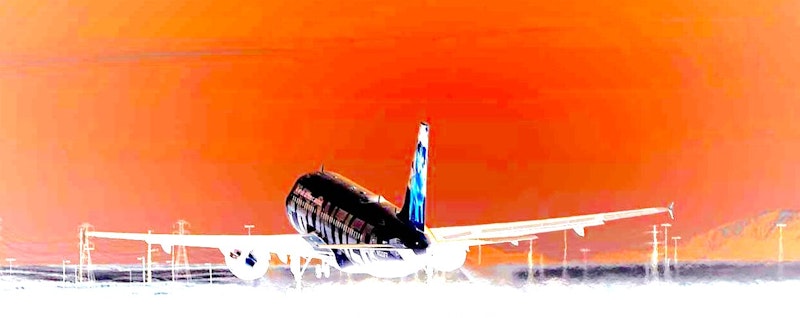Winners include “Servant,” “Clean Slate,” and “Steel and Glass,” in which a loquacious wandering inventor stands revealed as an android. “Alala” and “Tiger, Tiger” also combined thought-provoking plot lines with…
—Sky Frontier Companion
“Wide as the Antares spaceway,” Harry said, eyes on the view screen; blackness and dots would be added later. “Out here,” he said. “Nothing between us, between us and whatever a, a... wilderness of stars has in store.” Tony, at her post, swung her long, handsome profile in his direction. “Why, Commander,” she exclaimed. “I believe you like that idea.”
“A man knows who he is out here,” the Commander said, and he laughed the only laugh Harry could do: a head-back guffaw. The laugh worked fine for the show; the Commander was man primeval, the rugged original sighted now in the age of space.
Olsen fired and a line of blue light shot out of what the script called his “photon pistol.” The effects people did the line as a long, narrow blur with white shimmer along its edges; the soundtrack had a whirring sound, as if blenders were going too fast to be heard properly. Then the noise cut off, the blue line disappeared. “Think we staggered it,” Olsen, or Drake, said tensely. “But there’s the titanium”—a toss to his jaw—“its casing.” He said this as if casing were a mot juste that had just occurred to him.
The robot straightened up. It was a collection of cardboard sections and plastic parts; inside it was Ted Cassidy, a big man who played Lurch on The Addams Family. The cardboard was reinforced with chicken wire and the outside was painted cobalt blue. The blue seemed very glossy and frost-like on a color TV; the show’s lighting pushed together some deep blacks and stranded purples to set it off.
“The thing’s mechanism may be faltering,” announced CG. “I sense disorientation.” He moved on the balls of his feet, circling as he eyed the robot for where to strike. Lt. Taj would tackle the robot; this had been written in because of the fan mail. Olsen didn’t like it one little bit; and okay, in CG’s view that was just too bad.
CG held perfectly still. Then his left shoulder and right elbow jerked back together; they made a bold diagonal.
This year was the first that anybody saw any of it. The red shirt who died, the footage of a cruiser docking, Donegal’s tug at one mustache and then the other. Drake’s tense “Our photons, talkers—they’ve got them.” Merlin the computer giving his avuncular, chuckling “Let me reckon the odds” while patterns galumphed on its checkerboard of fat, square lights. (They were a letdown, but Palfroy had done this much: the flat checkerboard of lights was mounted on a globe edged with chrome, not set flat against an instrument panel; and this globe stood atop a metal box, one that was painted mauve and also edged with chrome. The work had flair.)
And there was Deck 1—Command. Kids could be a bit intimidated by what they saw on the screen. Instrument panels glowing in the semi-dark. The colors had something to jump against. Everybody, the actors, stood or sat in clear view. But when the camera prowled past Drummond, her control panel seemed flush with turquoise, emerald, ruby lights. Beyond Drummond loomed Harry, occupying the TV screen’s upper right in his Commander’s chair. A big round view screen hung where the crew could see it, and that added light. More light glowed from panels set in the walls.
Beyond Harry and his chair could be seen the beginning of a sharp curve. This was Deck 1’s other bank of control posts. Drummond and her screens and buttons occupied the key position along one bank, and on the other side of the Commander’s chair lay the other. The two banks together made up a wishbone. Establishing shots captured the scene, Harry and his chair looming where the wishbone joined, the keen people sitting or standing (as the scene demanded) along its two blades, and the round view screen facing all. Each bank had a tip that slanted out and down, the resulting bulge having a Manta ray feel, rounded but sharp. Shot low, most often with Tony Hamilton’s hawk profile in view, the Manta ray tip seemed like the raised hood of some hot foreign car yet to be invented.
The place looked like it had power. Later on viewers would assume star flight into being. But in the 1960s people knew a proposition when they heard one. Lobbing some men at the moon took the world’s mightiest nation working itself flat out. The stars, getting all the way out there, would be colossal. The same for staying out there. Deck 1 had the muscle to make that feat possible. That’s how it looked, anyway. Seeing the place produced the kind of moment TV producers dream about: it was more than people expected to see on their TV.

